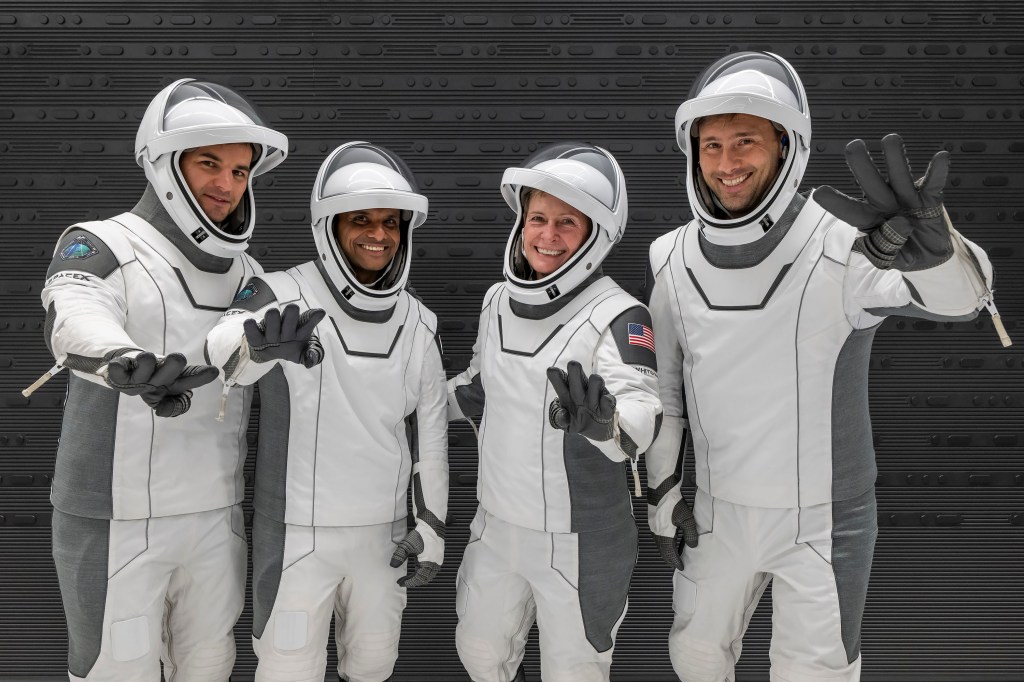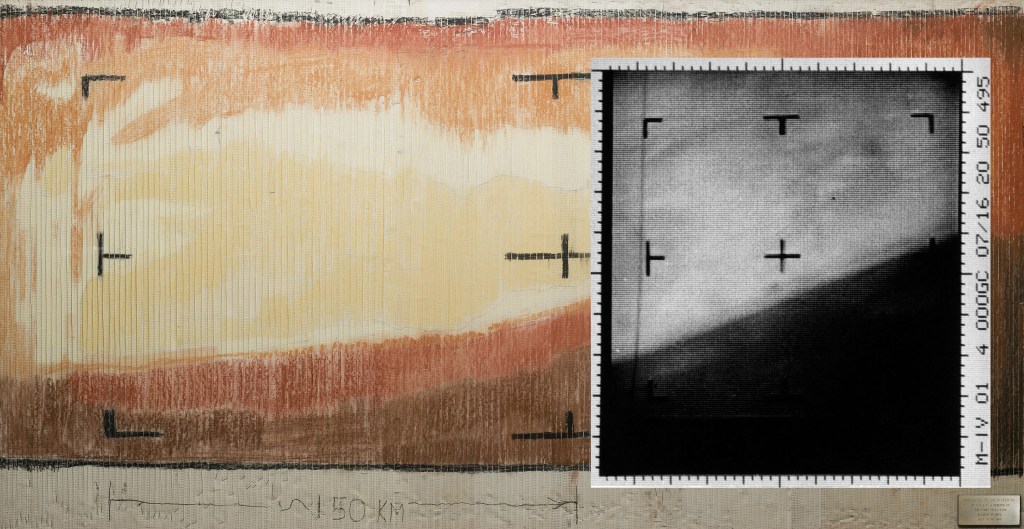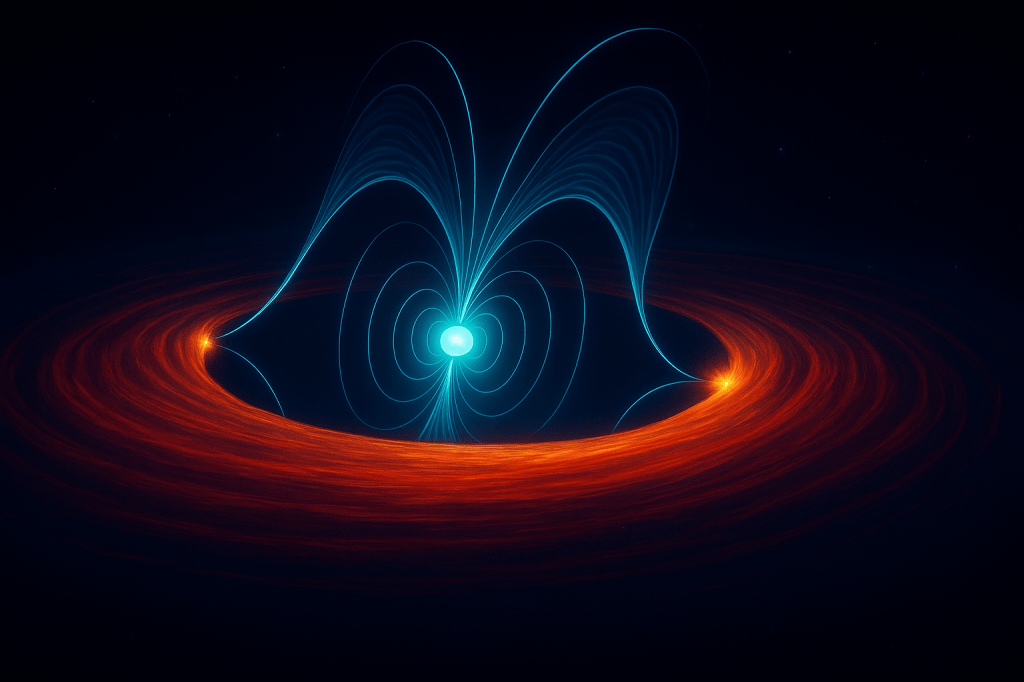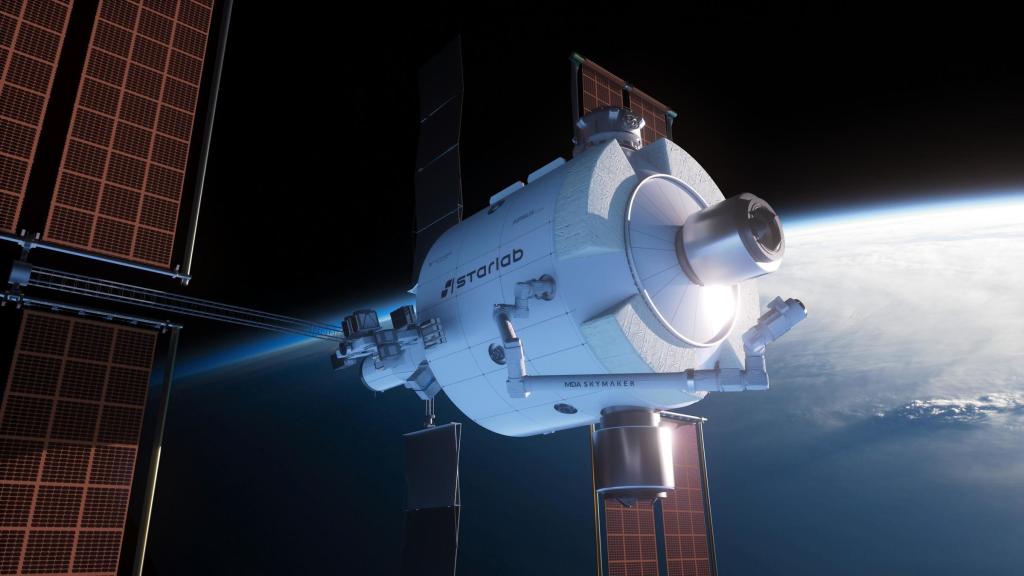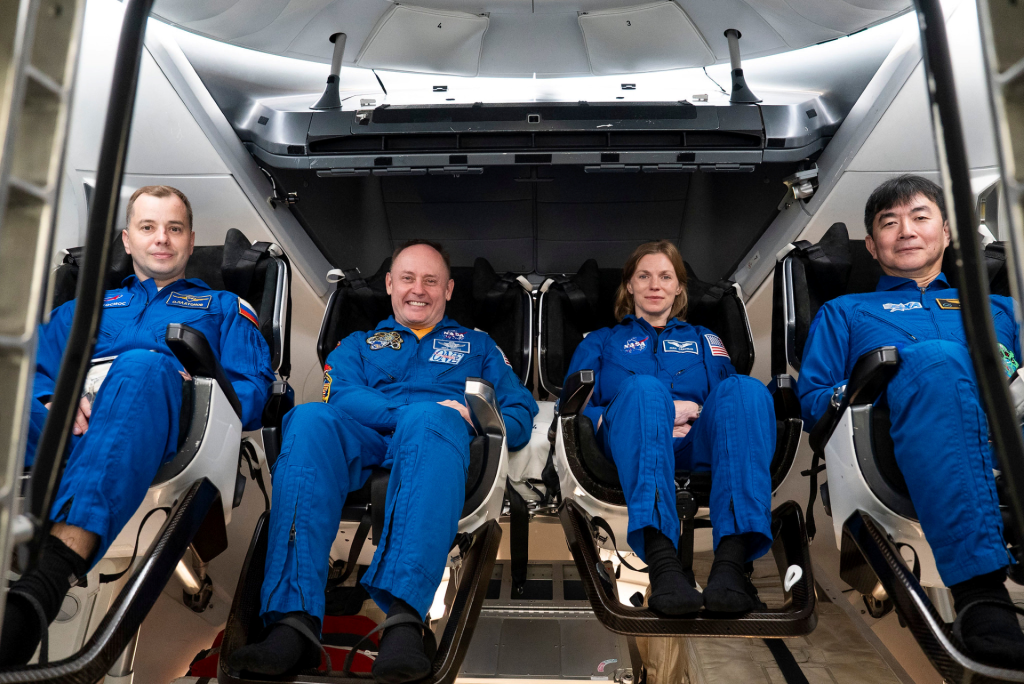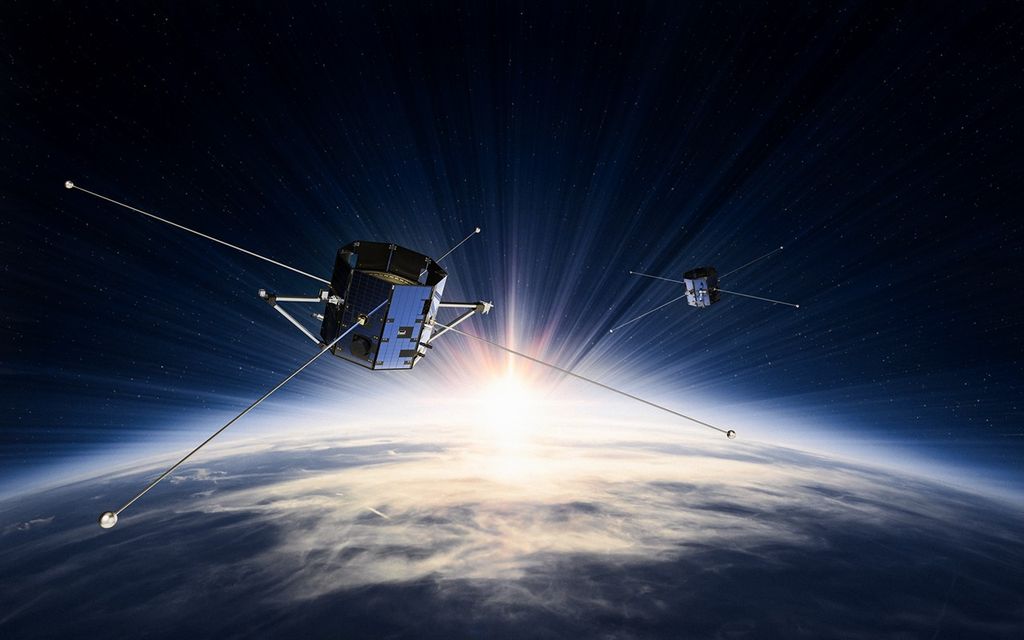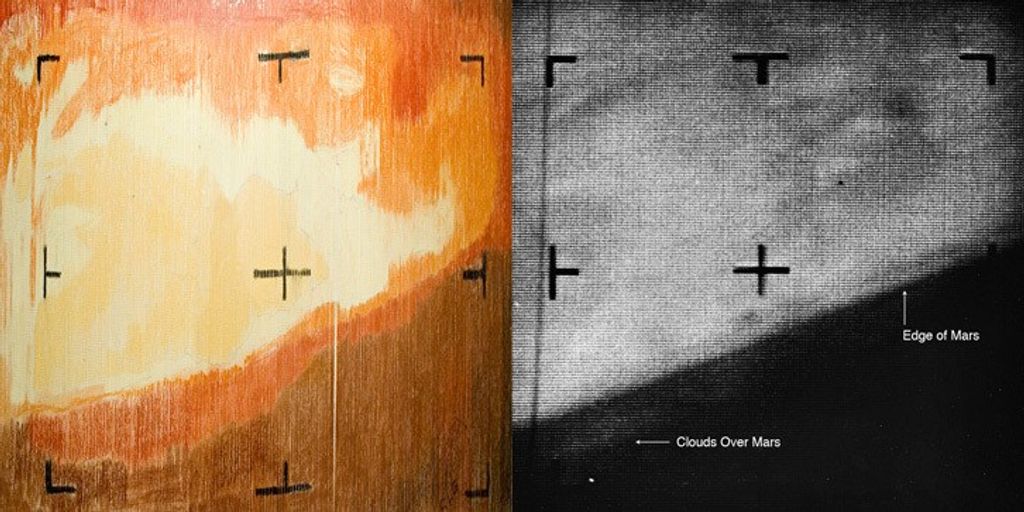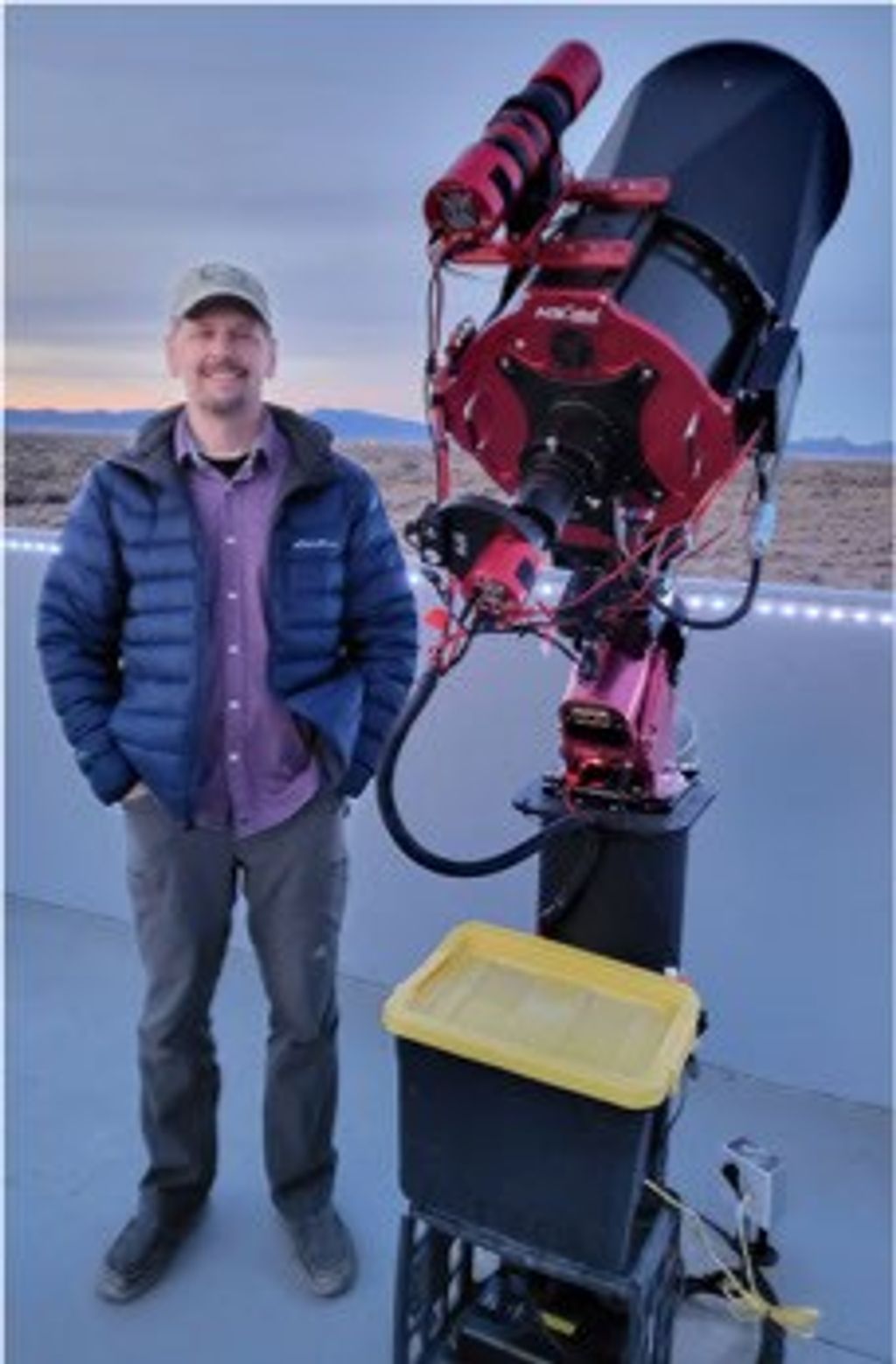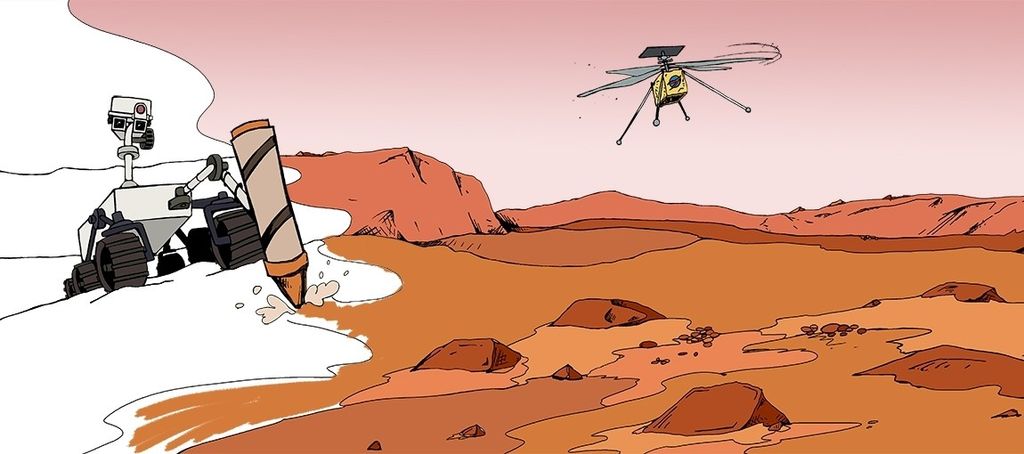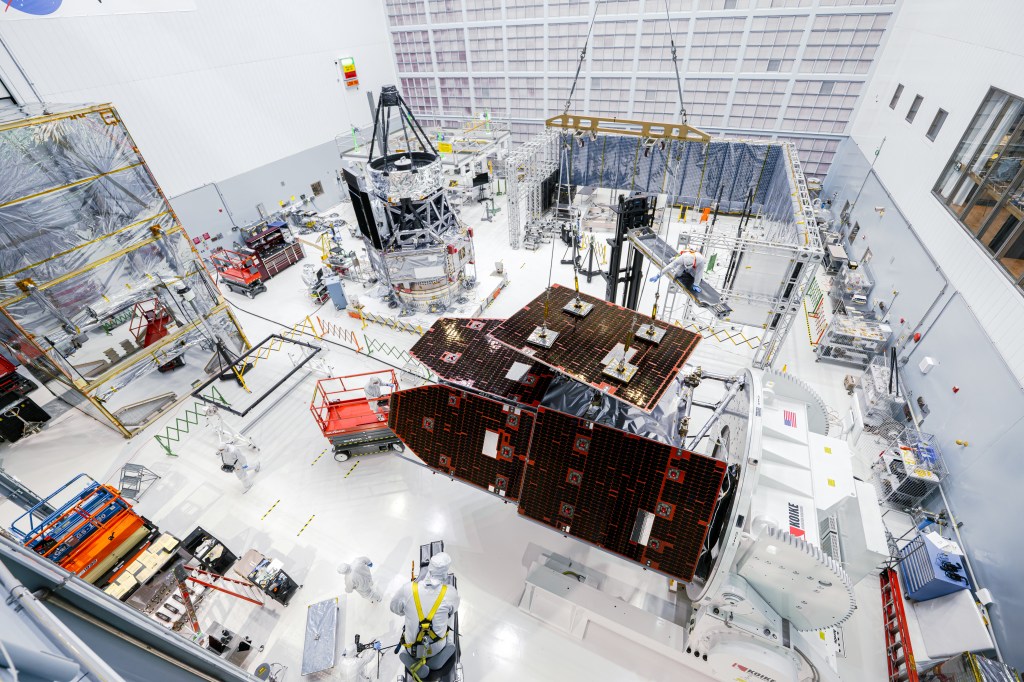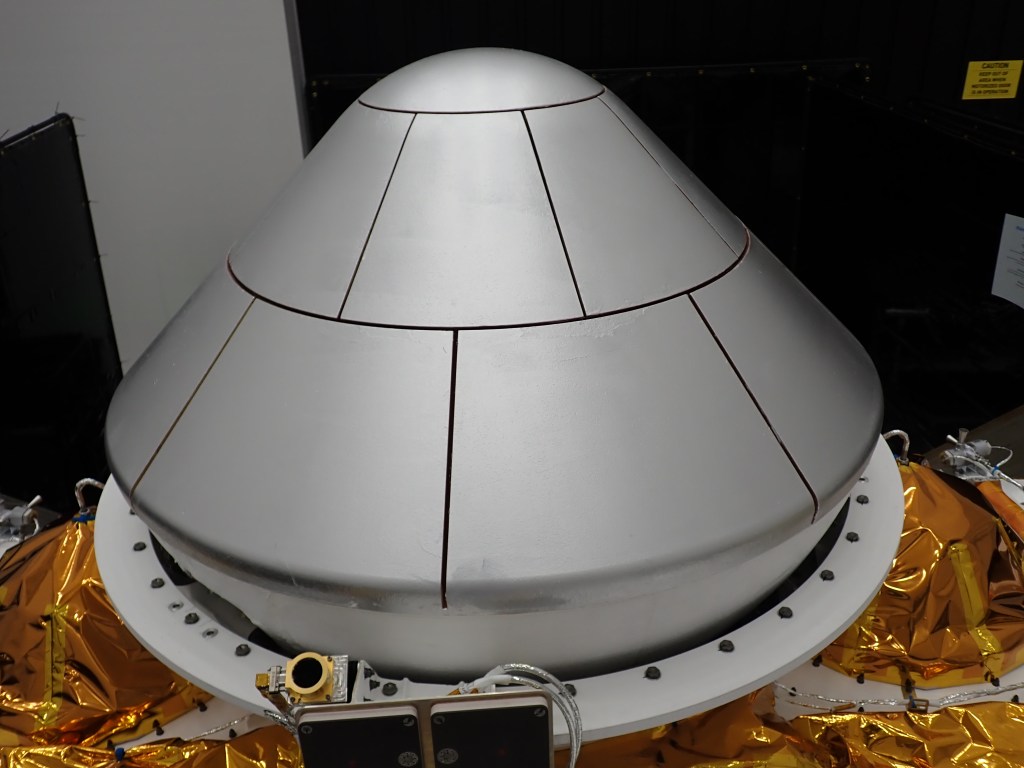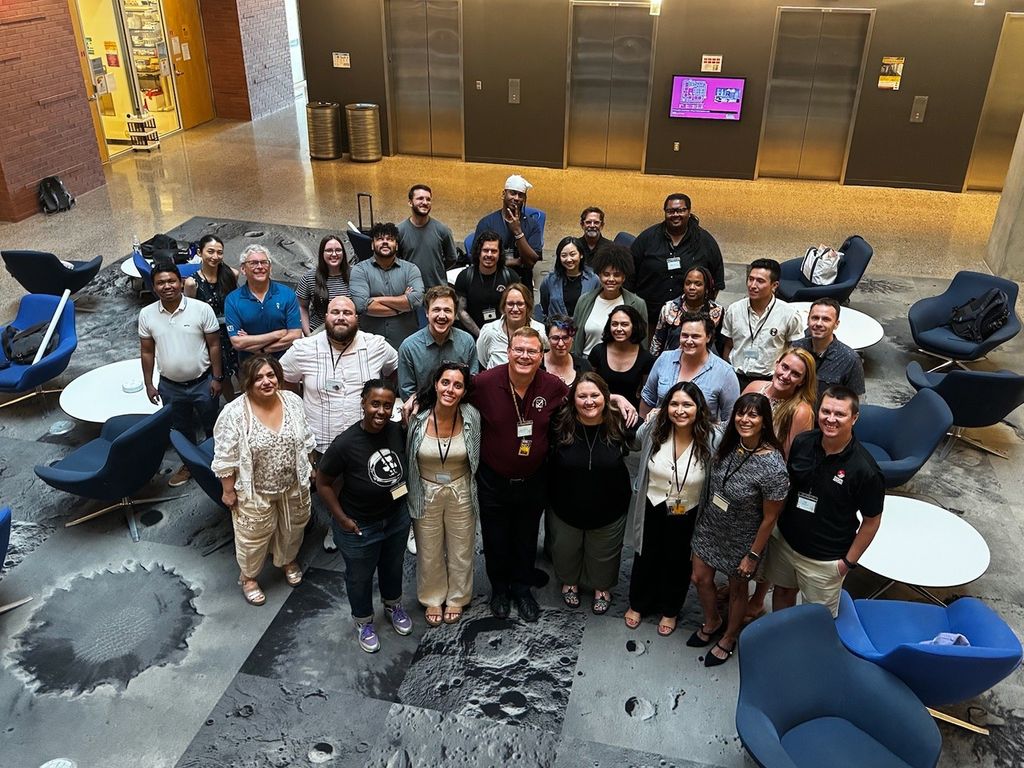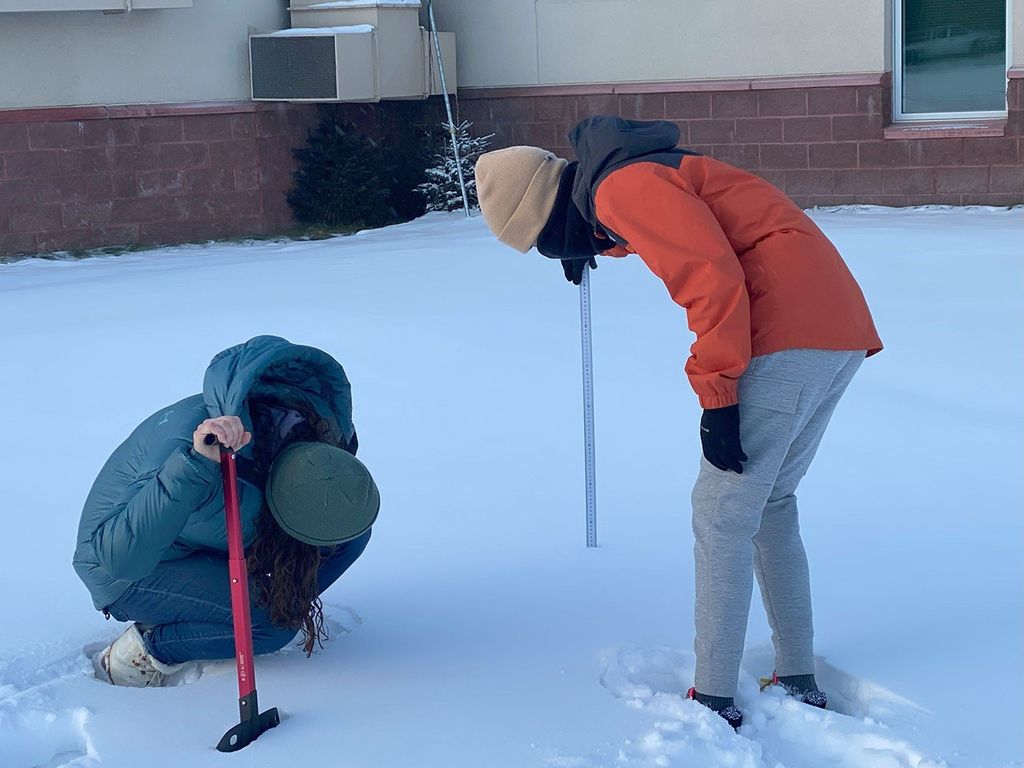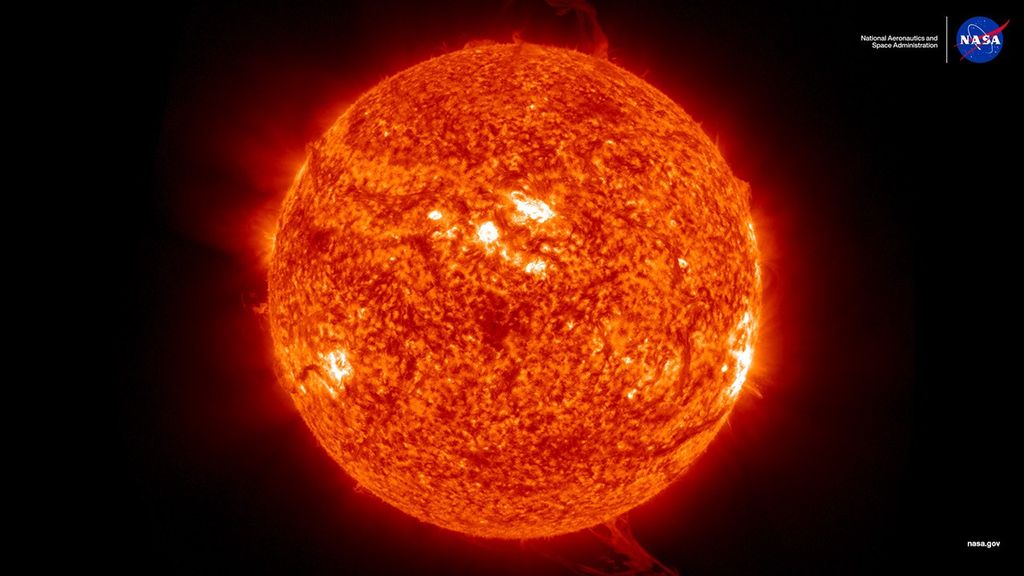ISS Daily Summary Report – 11/20/2020
Payloads
Airborne Particulate Monitor (APM) Install: The crew inspected the APM unit for debris, installed it in its Node 3 location, then powered it up and took photos. Air quality in crewed spacecraft is important for keeping astronauts healthy and comfortable. Although requirements exist for maximum allowable concentrations of particulate matter, currently no measurement capability verifies whether these requirements are met. APM demonstrates an instrument for measuring and quantifying the concentration of both small and large particles in spacecraft air. The data can be used to create a map of air quality in terms of particles and shed light on the sources of such particles.
Avatar-X: The crew assisted with the Avatar-X experiment operations. During these operations, the ground team controlled the Avatar-X system to locate various hidden objects. JEM Commercial (Avatar-X, or Kibo Avatar-X) demonstrates remote robot technology, Avatar-X, a 4K Camera, and new encoding method. A user on Earth remotely controls a camera, installed near the window of the Japanese Experiment Module, to see the view from space.
Cell Biology Experiment Facility (CBEF-L) Configuration Change: The crew performed reconfiguration of the CBEF-L system as preparation for the upcoming SpX-21 Space Organogenesis investigation. The Development of Advanced 3D Organ Culture System Utilizing the Microgravity Environment (Space Organogenesis) investigation demonstrates growth of organ buds from human stem cells in three-dimensional (3D) cultures in microgravity. Researchers plan to use these cultures to observe growth of the organ buds and analyze changes in gene expression. Cell culture on Earth needs supportive materials or forces to achieve 3D growth, but in microgravity cell cultures likely can expand into three dimensions without those devices.
Life Support Rack (LSR) Pre-gather and Maintenance: The crew gathered the appropriate hardware, and then replaced water pump 1. Telemetry from previous operations indicated water pump 1 functionality was degraded. The crew also replaced an external filter used in the LSR’s water management system. LSR is a technology demonstrator for closed-loop air revitalization. LSR captures carbon dioxide from cabin air and recovers 50% of its oxygen for use by the astronauts. LSR will operate for a minimum of one year on the ISS to demonstrate the robustness of the technology for future exploration missions.
Fluids Integrated Rack (FIR) / Light Microscopy Module (LMM) Advanced Colloids Experiment (ACE) Module Exchange: The crew performed the activities needed to remove the processed ACE-TR1 (Ellipsoid) module, and then installed an ACE-T11 module. ACE-Temperature Control and Gradient Sample-11 (ACE-T-11) involves the design and assembly of complex three-dimensional (3D) structures from colloids, or small particles suspended within a fluid medium, and control of particle density and phase behavior. Such structures are vital to the design of advanced optical materials and important for 3D printing and additive manufacturing. Assembling structures in microgravity provides insight into the relation between particle shape, crystal symmetry, density, and other fundamental factors.
Grip: The crew performed the Supine Science 3 session for the Grip investigation. In this test, the crew performs the same tests as seated Sci-2 (tasks related to friction, collisions, etc), but in the supine position. The Grip experiment studies the long-duration spaceflight effects on the abilities of human subjects to regulate grip force and upper limbs trajectories when manipulating objects during different kind of movements: oscillatory movements, rapid discrete movements and tapping gestures.
Plant Habitat-02: The crew gathered the necessary hardware and gathered leaf samples from the growing radish plants in the module. This second leaf sampling activity went well, and the plants look good over all. Assessment of Nutritional Value and Growth Parameters of Space-grown Plants (Plant Habitat-02) cultivates radishes as a model plant that is nutritious and edible, has a short cultivation time, and is genetically similar to Arabidopsis, a plant frequently studied in microgravity. Developing the capability for food production in space requires understanding cultivation conditions such as intensity and spectral composition of light and the effects of the culture medium or soil. This research could help optimize plant growth in the unique environment of space, as well as evaluation of nutrition and taste of the plants.
Refabricator Stow: The Refabricator was powered down, removed and stowed for return. The recent series of bonding tests completed the science objectives and Refabricator will be returned to the ground. The Refabricator’s objective is to demonstrate a unique process for repeatable, closed-loop recycling of a polyetherimide/polycarbonate plastic material for additive manufacturing in the microgravity environment of the ISS. Eventually, Refabricator type hardware could recycle waste plastic materials into high quality 3D-printer filament, providing the potential for sustainable fabrication, repair, and recycling capabilities on long-duration space missions. This hardware represents a key component of NASA’s In-Space Manufacturing (ISM) technology development roadmap.
Spacesuit Evaporation Rejection Flight Experiment (SERFE): The crew gathered the processed Microbial Capture Device (MCD) and counted the number of purple dots (bacterial colonies) present. The crew reported there were too many purple dots to easily count so she took images of the plate for the ground to evaluate. This was part of the nominal, routine suite of testing for the SERFE experiment. SERFE demonstrates a new technology to remove heat from spacesuits and maintain appropriate temperatures for crew members and equipment during space walks. The technology uses evaporation of water for cooling. The SERFE system incorporates a Titanium and Hastelloy water loop that differs from previous space suit life support systems that use stainless steel. The investigation determines whether microgravity affects performance and evaluates the technology’s effect on contamination and corrosion of spacesuit material.
STaARS BioScience-12: The crew removed the cryotube kit and six experiment containers from the STaARS-1 experiment facility. These were subsequently inserted into cold stowage in a Minus Eighty Laboratory Freezer for ISS (MELFI). Novel Protein Aggregation/degradation Studies in the Unique ISS Environment Provide Mechanistic Insights Relevant to Biopharmaceutical Development and Degenerative Diseases (STaARS BioScience-12) examines protein folding and aggregation under the unique stresses of space, including microgravity and cosmic radiation dependent folding and degradation and the combination of these factors. Biopharmaceuticals play a significant role in the prevention, diagnosis, and treatment of human diseases, but a challenge in making them is the instability and degradation of their proteins. This investigation may help develop new strategies to prevent protein degradation and support design of therapeutic biopharmaceuticals.
Turbine-Ceramic Manufacturing Module (T-CMM): The crew installed a science module into the T-CMM facility, which was subsequently inspected, processed, and then removed and stowed. T-CMM demonstrates manufacture of single-piece turbine blade/disk combinations (blisks) in microgravity for commercial use. Manufacturing blisks in space could produce parts with lower mass, lower residual stress, and higher strength than those made on Earth due to greatly reduced sedimentation of the solution in microgravity.
Tangolab-2 Card Cube Install: The crew installed Payload Card 13 into slot 6 of the Tangolab-2 facility. TangoLab-2 is a reconfigurable general research facility designed for microgravity research and development and pilot manufacturing in the ISS.
Systems
Compound Specific Analyzer-Combustion (CSA-CP) Checkout: The crew installed new battery packs into newly resupplied CSA-CPs, reset the internal clock and data logger for each monitor, and allowed all units to off-gas in an open environment. The CSA-CPs provide real-time readings following a combustion event and subsequent clean-up efforts. The CSA-CP is also used for continuous monitoring of carbon monoxide levels in the ISS.
Battery Stowage Assembly (BSA) Operations: The crew terminated the first round of the automated Charge-Discharge-Charge (C-D-C) maintenance cycle on all helmet light batteries, Pistol Grip Tool (PGT) batteries, two Rechargeable EVA Battery Assemblies (REBAs). The crew then initiated a second round of C-D-C maintenance on one of the PGTs and both REBAs in the BSA via the Battery Charger Assembly (BCA). The charging is typically terminated 3 days after this activity as C-D-C maintenance may take up to 65 hours to complete.
Regenerative Recycle Tank Drain/Fill: The crew set up the recycle tank to drain to a ЕДВ-У. Following the setup, the ground performed the tank drain using the Urine Transfer System (UTS). Once the ground specialists completed the transfer, the crew verified the recycle tank was empty, terminated the drain, and repositioned the fill/drain valve to fill. The crew also swapped the ЕДВ in the offload ЕДВ spot of the UTS.
Completed Task List Activities:
- On-board Training (OBT) of the Payload Operations and Integration Center (POIC)
- OPTIMIS Table Application Big Picture Words Review
Today’s Ground Activities:
All activities are complete unless otherwise noted.
- Regenerative Recycle Tank Drain and Fill Support
Look Ahead Plan
Saturday, 11/21 (GMT 326)
Payloads:
- Avatar-X
Systems:
- Crew Off-Duty
Sunday, 11/22 (GMT 327)
Payloads:
- Avatar-X
Systems:
- Crew Off-Duty
Monday, 11/23 (GMT 328)
Payloads:
- Drop Vibration
- Grasp
- MELFI Ops
- NanoRacks PF-1 Relocate
- NRCSD Deployer Removal
- POLAR Desiccant Swap
- SERFE
- Space Fibers-2
- Standard Measures
- Thermal Amine Scrubber
Systems:
- EVA BSA Battery Ops
- EVA EDAR Remove
- NORS O2 Terminate
- NORS N2 Install
- Dragon Emergency OBT
Today’s Planned Activities:
All activities are complete unless otherwise noted.
- Grip experiment constraints reminder
- Turbine Ceramic Glacier Module Removal
- Standard Measures Post-sleep Questionnaire
- Avatar-X Operations Preparation
- TEST. Collecting smear samples from outer surfaces of spacesuits and interior elements (after EVA)
- СТТС configuration for MRM2
- Avatar-X Operation Experiment with Crew
- Battery Stowage Assembly (BSA) Operation Termination
- Post-EVA Orlan-MKS debrief with specialists
- Treadmill 2 (T2) Handover Video Review
- ISS Crew Adaptation
- T2 Crew Handover
- ISS Crew Orientation
- Drying Orlan-MKS Water Feed Line
- Battery Stowage Assembly (BSA) Operation Initiation
- Health Maintenance System (HMS) ISS Food Intake Tracker (ISS FIT)
- Regenerative Environmental Control and Life Support System (ECLSS) Recycle Tank Drain
- Grip setup in Supine position
- Airborne Particulate Monitor Node 3 Install
- Orlan-MKS Drying, start
- Grip science performance in supine position
- Checking Docking Assembly (СтА) accessories kit stowage in SM ПрК
- PILOT-T. Preparation for the Experiment
- Food Acceptability Survey
- Environmental Health System (EHS) – Compound Specific Analyzer-Combustion (CSA-CP) Checkout
- Regenerative Environmental Control and Life Support System (ECLSS) Recycle Tank Drain Part 2
- Turbine Ceramic Module Insertion
- PILOT-T. Experiment Ops
- SERFE Water Sample MCD Data Record
- Removal of Portable Repress Tank (БНП)
- Drying Orlan-MKS (switchover to a backup fan)
- Urine Transfer System Offload EDV Swap
- Crew starts transfer of files of the session to Perspectives Zbook
- Avatar-X Operations Closeout
- Plant Habitat-02 Leaf Sample
- Crew retrieves data from Perspectives Zbook and plugs Hard Drive to SSC
- Grip partial stowage [DEFERRED]
- Health Maintenance System (HMS) Profile of Mood States (POMS) Questionnaire
- Orlan-MKS Drying – terminate
- Food Physiology Crew Diet Briefing
- STaARS BioScience-12 Cryotube Kit and Experiment Container Removal
- TangoLab-2 Card Cube Install
- On MCC Go Progress 444 and DC1 Interface Leak Check
- PILOT-T. Closeout Ops
- Plant Habitat-02 Leaf Sample MELFI Insertions
- ISS Experience Z-Cam Setup on the MWA
- PAO Preparation
- Regenerative Environmental Control and Life Support System (ECLSS) Recycle Tank Fill Part 3
- STaARS MELFI Cryotube Kit and Experiment Container Insertion
- Public Affairs Office (PAO) High Definition (HD) Config JEM Setup
- Public Affairs Office (PAO) Event in High Definition (HD) – JEM
- DC1-СУ Hatch Opening
- LSR R&R items gather
- Fluids Integrated Rack Rack Doors Open
- Handover of Increment 64 Crew
- XF305 Camcorder Setup
- Cell Biology Experiment Facility Left (CBEF-L) Configuration Change from F to G


